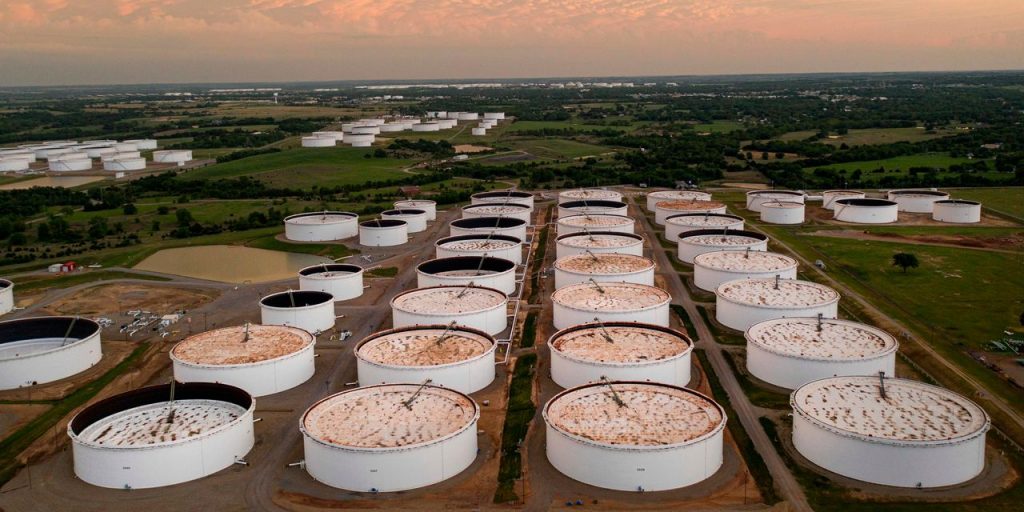Oil futures ended mixed on Wednesday, with U.S. global benchmark crude up modestly and U.S. prices posting a slight decline after four consecutive session gains.
Prices this week had found support from expectations of tighter supplies on the heels of an OPEC+ decision over the weekend to cut oil production.
On Wednesday, weak U.S. economic data fed concerns of an economic recession that would hurt energy demand, but government data showing weekly declines in domestic crude, gasoline and distillate supplies, was “far from recessionary,” according to one analyst.
Price action
-
West Texas Intermediate crude for May delivery
CL.1,
-0.98% CL00,
-0.98% CLK23,
-0.98%
fell 10 cents, or 0.1%, to settle at $80.61 a barrel on the New York Mercantile Exchange. -
June Brent crude
BRN00,
+0.15% BRNM23,
+0.15% ,
the global benchmark, added 5 cents, or nearly 0.1%, to $84.99 a barrel on ICE Futures Europe. -
Back on Nymex, May gasoline
RBK23,
+0.14%
rose 3% to $2.8201 a gallon, the highest front-month finish since October. May heating oil
HOK23,
+0.90%
added 2.4% at $2.731 a gallon. -
May natural gas
NGK23,
+8.45%
rose 2.3% to $2.155 per million British thermal units.
Oil and product supply declines
Strong U.S. crude exports and a “modest dip in refining activity was enough to overpower a strong rebound in imports, leading to a second consecutive” crude supply decline, said Matt Smith, lead oil analyst, Americas, at Kpler.
The Energy Information Administration on Wednesday reported that U.S. commercial crude inventories fell by 3.7 million barrels for the week ended March 31.
On average, a survey of analysts conducted by S&P Global Commodity Insights forecast a decline of 7.5 million barrels. Late Tuesday, the American Petroleum Institute, a trade group, reported a 4.3 million-barrel decline in domestic crude supplies, according to sources.
The draw in crude stocks was limited by a minor Strategic Petroleum Reserve release into commercial stocks, said Smith. The EIA report showed SPR oil stocks at 371.2 million barrels, down 400,000 barrels from a week earlier.
The EIA report also showed a weekly inventory declines of 4.1 million barrels for gasoline and 3.6 million barrels for distillates. The analyst survey had forecast supply decreases of 1.3 million barrels for gasoline and 140,000 barrels for distillates.
“Stronger implied demand for both gasoline and distillates have also yielded draws, rounding out a bullish tilted report,” said Smith.
Crude stocks at the Cushing, Okla., Nymex delivery hub declined by 1 million barrels for the week, the EIA said.
EIA data ‘far from recessionary’
The EIA supply data Wednesday are “far from recessionary,” said Phil Flynn, senior market analyst at The Price Futures Group. Still, at the moment, it “looks like recession fears are trumping supply-side worries.”
U.S. private sector payrolls climbed by 145,000 in March, according to the ADP National Economic report released on Wednesday. That was below the 210,000 expected by economists polled by The Wall Street Journal.
Also Wednesday, the Institute for Supply Management’s service sector activity index, a bellwether of business conditions at U.S. companies, fell to a three-month low of 51.2% in March from 55.1% in February.
Oil prices had seen sharp gains over the last two sessions after the weekend announcement by Saudi Arabia and some of its OPEC+ allies of a decision to cut production by around 1.16 million barrels a day in May through year-end. That was in addition to the standing OPEC+ agreement to reduce output by 2 million barrels a day, and a decision by Russia to extend its cuts of 500,000 barrels a day through the end of the year.
Oil markets have priced in the initial shock of the announced OPEC+ production cuts, but prices could continue higher “if demand surprises to the high side as we move into the summer. However, this is a massive if,” said Troy Vincent, senior market analyst at DTN.
“Gasoline demand has recovered alongside consumer spending in the services sector in recent months but today’s disappointing U.S. ISM services PMI data suggest that the U.S. consumer may be approaching their spending limits,” he told MarketWatch.
Read: 6 things investors need to know about the surprise OPEC+ production cuts
Still, several Wall Street banks have raised their forecast for crude prices following the OPEC+ output cut announcement.
“These additional cuts mean that the market will be even tighter later in the year. As a result, we expect Brent to trade above $100 a barrel over the second half of 2023,” wrote analysts at ING, in a note. They expect Brent to average $101 a barrel over the second half of the year and $104 a barrel over the fourth quarter.
See: Here’s what is really behind OPEC+ oil-production cuts, say energy analysts
Read the full article here
















